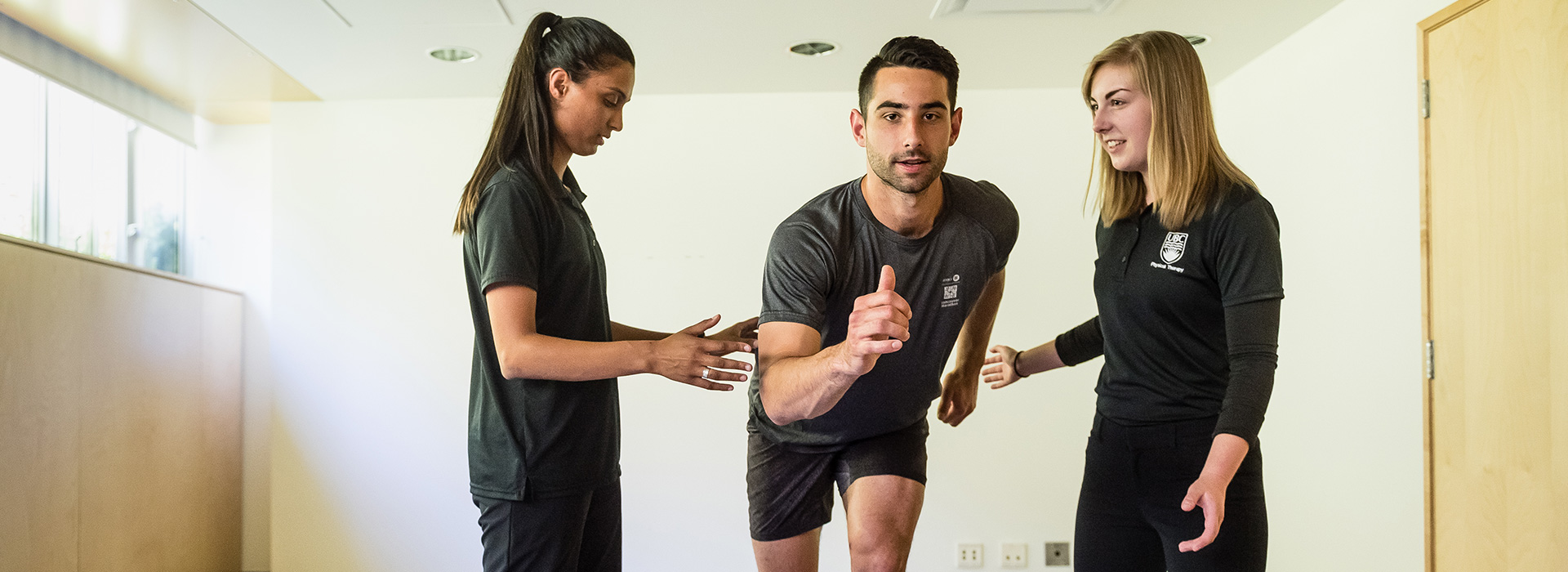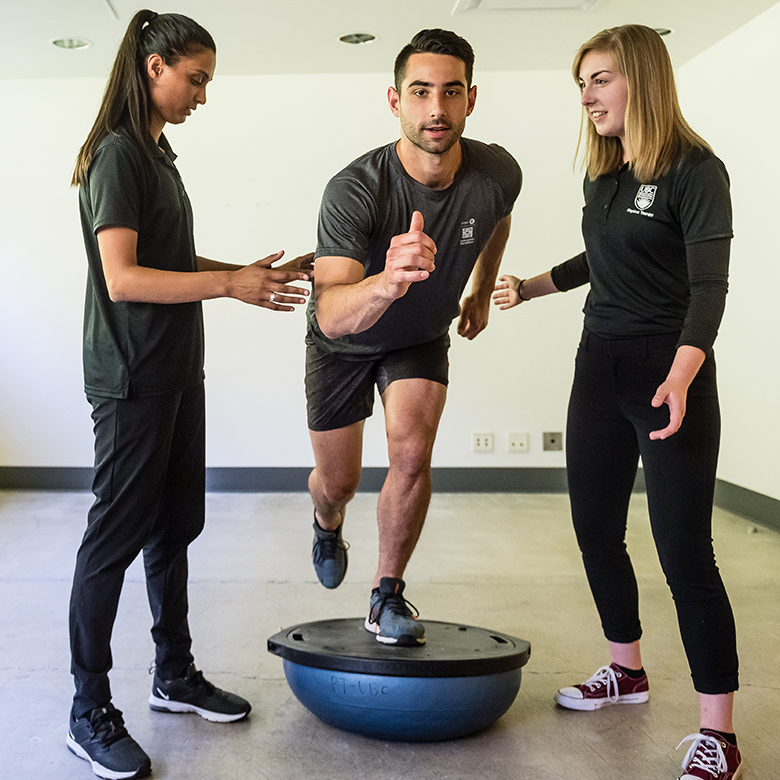Strengthening communities through learning
Inside a newly-renovated gym on the University of British Columbia’s Vancouver campus, a physical therapy patient racks up kilometres on a treadmill for an ongoing research study. A few metres away, a master’s student works with another patient on a treatment table. Down the hall, students and faculty collaborate in an office.
This integration of research and clinical practice co-existing in one space will soon be a reality at the recently-opened UBC Physical Therapy & Research Clinic (UBC PTRC).
An initiative of the faculty of medicine’s department of physical therapy, the clinic builds upon the student-led practice model to provide a seamless translation of research into care, improving health outcomes for patients. Similar clinics in health authorities are located across the province, from New Westminster to Prince Rupert.
“This clinic is meant to have higher quality of learning and experience for students,” says Melissa Idle, a clinical assistant professor of physical therapy and the clinic’s supervising instructor. “It will also be equally valuable for patients and the community.”
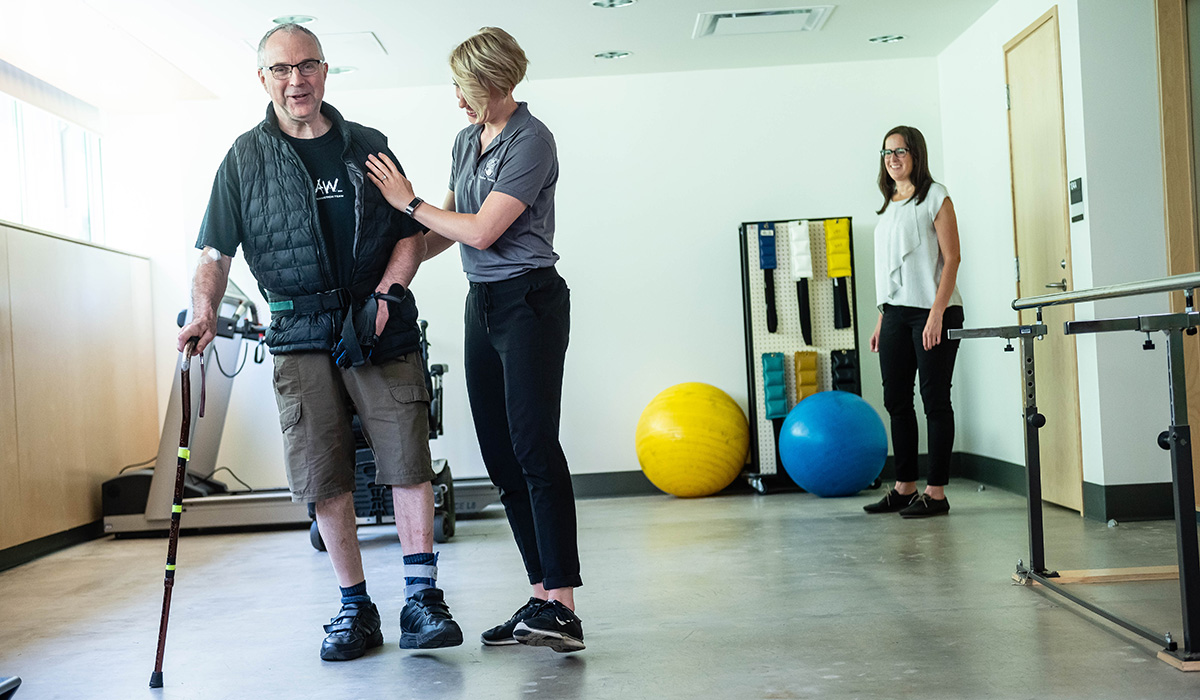
Filling a gap
With UBC students providing treatment under faculty supervision, the new fee-for-service clinic offers an affordable model of care.
“One of our priorities is to provide services to underserved populations,” says Idle, a member of the Gitxsan nation. “Our sliding scale fee model allows us to offer discounted rates and more accessible treatment.”
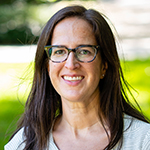 Melissa Idle
Melissa Idleclinical assistant professor
department of physical therapy
And — unlike many private physical therapy clinics that often focus on musculoskeletal, single system problems like hip replacements, back pain, or sprained ankles — the UBC PTRC will focus on meeting an unmet need.
Sue Murphy, physical therapy department head, says there is an opportunity to treat patients with more complex system concerns, such as those with long term neurological conditions, or patients with multi-system issues.
“Somebody living with multiple sclerosis will need physiotherapy for a prolonged period and they’re much more complex to treat than someone with a sprained ankle,” Murphy says. “These people often have difficulty finding a private practice that’s appropriate for them. So we want to fill some of those gaps.”
In this way, the UBC PTRC showcases the faculty of medicine’s contract with society – placing patients and the public at the centre of the clinic’s purpose.
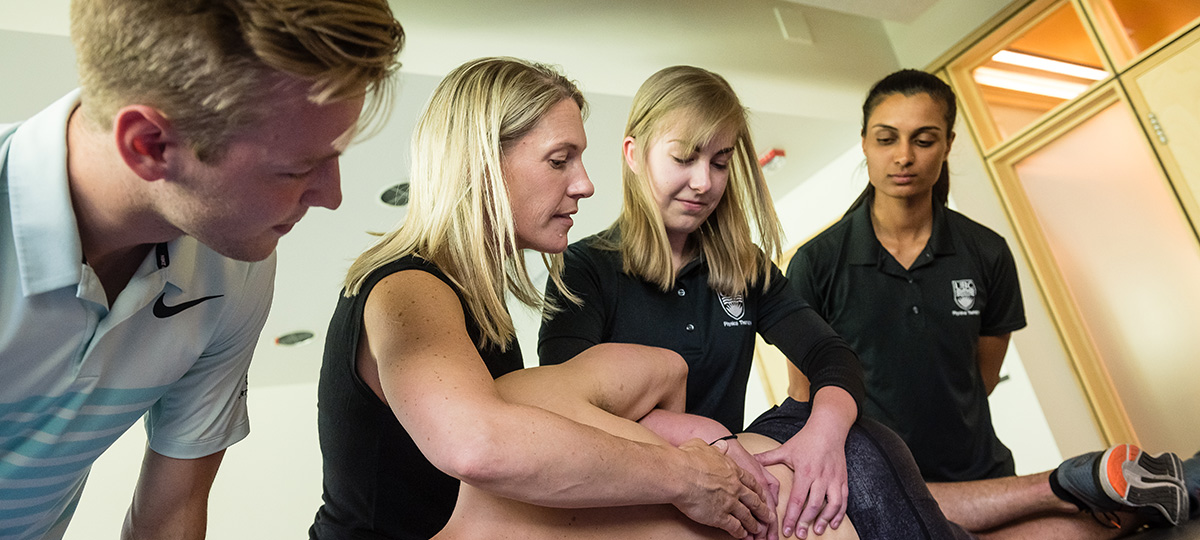
Students lead the way
The UBC PTRC’s student-led model allows learners to not only support patients under supervision, but gain hands-on experience running the clinic — playing a leading role in everything from scheduling appointments to arranging for equipment repairs.
Students in the master of physical therapy program will be exposed to an authentic clinical experience, preparing them for the day they graduate.
 Sue Murphy
Sue Murphyhead and senior instructor
department of physical therapy
“The students are really in the driver’s seat,” says Murphy. “This is very different from going to a private practice and being told, ‘Here are three patients you will see today.’ In this model, the student experience mimics the real world.”
Amy Edwards, a master of physical therapy student, knew this career was right for her after a car accident led her down a personal journey of recovery.
“After the accident I was supported by a physical therapist and after seeing the impact they made, I knew I wanted to do the same for others — to help them feel better,” she recalls.
Edwards, now entering the second year of the program, says the new clinic is an exciting opportunity to combine real-world experience with the latest in physical therapy research.
“As students, it will be a place where we can learn in a supportive environment, but also see just how critical research is to advancing the profession and evidence-informed practice,” she says.
UBC has been training physical therapy learners since the 1960s. What began as a combined program with occupational science and occupational therapy (OSOT), evolved to an independent department that offers four degree programs — including three in collaboration with OSOT — a certificate program and an Internationally Educated Physiotherapy program.
Now in 2019, the new clinic will provide an opportunity for enhanced collaborations among master’s students, PhD students and faculty members carrying out their own research.
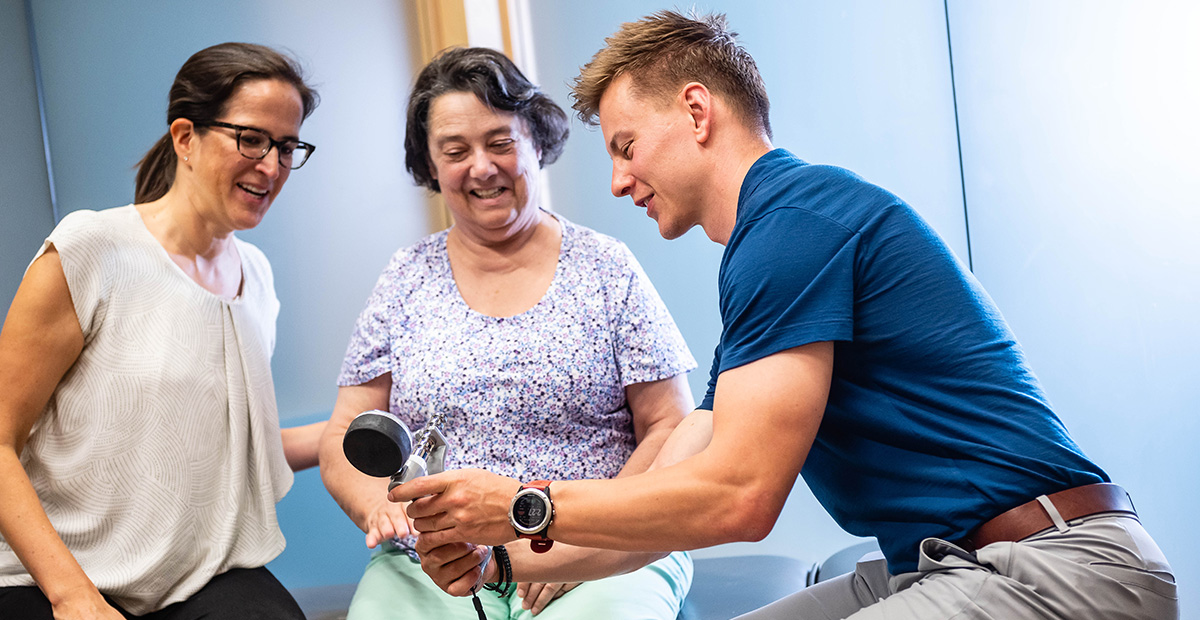
Research-informed practice
The UBC PTRC will draw on research to advance care and even implement programs developed by faculty members. The Fitness And Mobility Exercise Program (FAME) — a group exercise program for people who have had a stroke and have some standing and walking ability — is just one example of an innovative initiative translating new knowledge to improve health outcomes for patients. Developed by UBC physical therapy professor Janice Eng, the program has been proven to improve mobility, cardiovascular fitness, arm and hand function.
Idle says physical therapists at the clinic will also implement the GLA:D program. This program was developed by researchers in Denmark for individuals with hip or knee osteoarthritis (OA) symptoms.
“We’re providing quality, evidence-based informed care to our clients,” she says. “We want the clinic to advance physical therapy practice and develop new knowledge that we can then translate into our practice.”
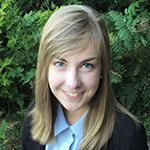 Amy Edwards
Amy Edwardsmaster of physical therapy student
The clinic’s innovative integration model connects faculty members with learners in a practice-based environment, allowing for efficient collaboration.
“Faculty members will be going back to their roots,” Murphy says. “Most of our researchers are physical therapists with a clinical practice background. So this is what’s meaningful. This is the frontline. This is why we do our work.”
For Edwards, the opportunity to work with diverse patient partners is particularly compelling, especially as students can simultaneously learn from faculty members doing research in the same space.
“Being able to gain hands-on experience supporting patients and advancing research for a range of different populations and chronic conditions is so important. And the fact that we will have this opportunity as students — right here on campus — is incredibly exciting,” says Edwards.
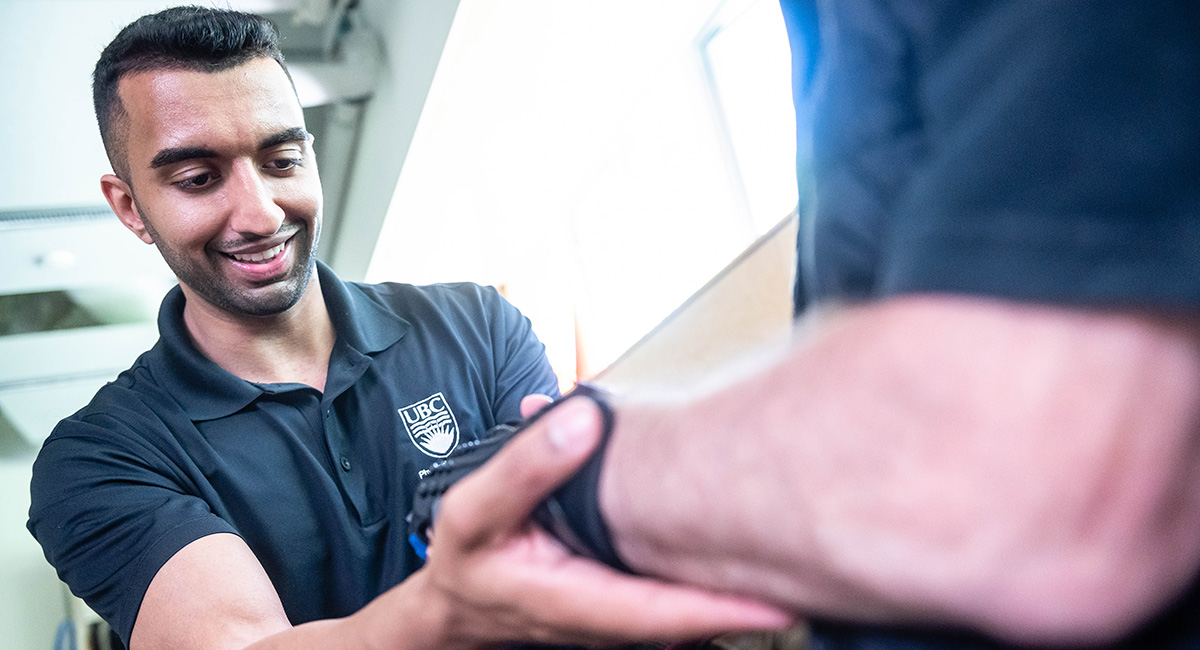
Future collaboration takes centre stage
Weeks before the clinic’s official opening, prospective patients began to call Idle, looking to book appointments. Collaborative relationships within the UBC community also began to take shape.
“We’re looking to reach out to other groups on campus that have synergistic goals, like the Movement Disorders Clinic and Student Health Service,” Idle says. “The plan has always been to expand into an interprofessional model.”
Potential partnerships with the faculty of medicine’s department of occupational science and occupational therapy and the BC Centre for Ability are already in the works. As ideas for new relationships build, so does the potential for further transforming health in our communities.
“We’ve been wanting this clinic for years, so now to actually see it come to fruition is really inspiring,” Murphy says.
Share this Story
Published: September 2019
